SpaceTourism
Latest
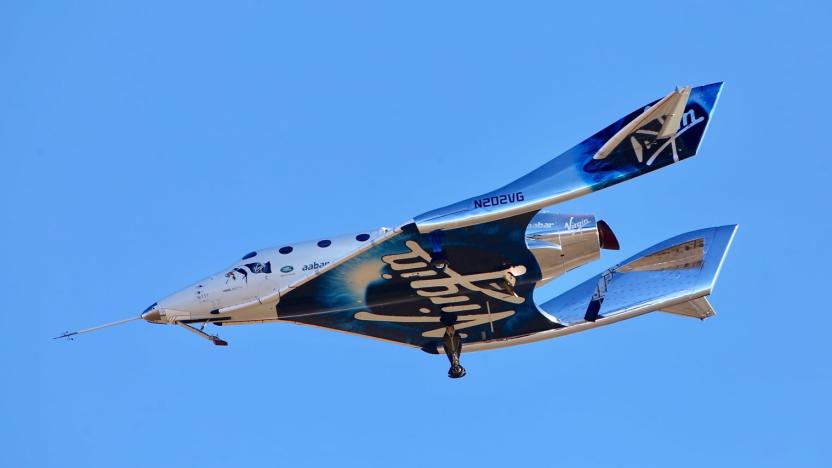
Virgin Galactic is going public to fund its expensive tourist spaceflights
Space tourism company Virgin Galactic has announced that it will go public via a merger with an investment firm. Its new partner, Social Capital Hedosophia (SCH), will invest $800 million in exchange for a 49 percent stake and take Virgin Galactic public later in 2019 -- a first for a spaceflight company.

Russia will fly two space tourists to the ISS in late 2021
Russia has flown just seven tourists to space since 2001, but it's about to expand that number in the near future. The country's space agency, Roscosmos, has signed a deal with Space Adventures to carry two "spaceflight participants" (read: tourists) to the International Space Station in late 2021. They'll fly aboard a familiar Soyuz spacecraft for a "short duration" trip. The guests haven't been named, although it's safe to presume they'll have large bank accounts.
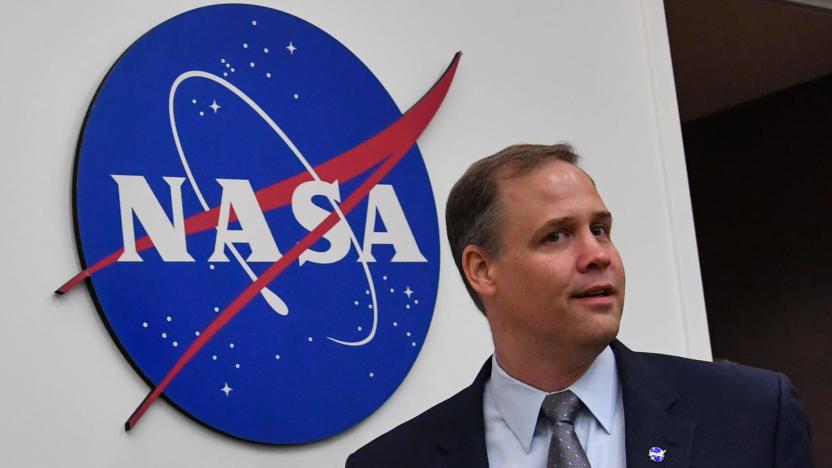
NASA considers selling trips to space tourists
The Jim Bridenstine-era NASA's efforts to privatize spaceflight could involve borrowing a page from Russia. The Washington Post notes the agency is mulling the possibility of offering seats to private tourists on the ships that take astronauts to the International Space Station, similar to how Russia has accepted space tourists in the past. It's just a proposal and would have to clear NASA's advisory council, but it already has the support of an advisory subcommittee.
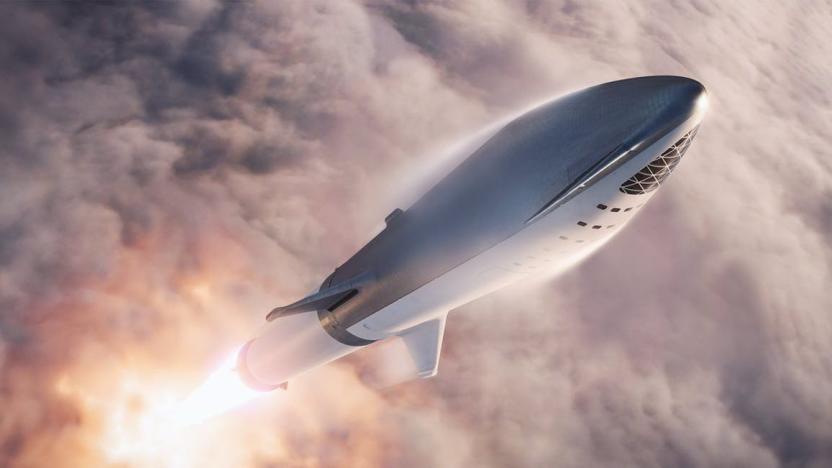
How the first space tourists will make it back to Earth alive
When SpaceX launches Japanese billionaire Yusaku Maezawa and his eight traveling companions for a trip around the Moon in 2023, the company will be undertaking an unprecedented step toward the future of civilian space flight. But with being the first to attempt this feat comes a number of technical and safety challenges that less ambitious expeditions, like Blue Origin's treks to the Karman Line, won't have to face. So, just how will SpaceX ensure that its first trip to the Moon doesn't turn into a real-life Gravity?
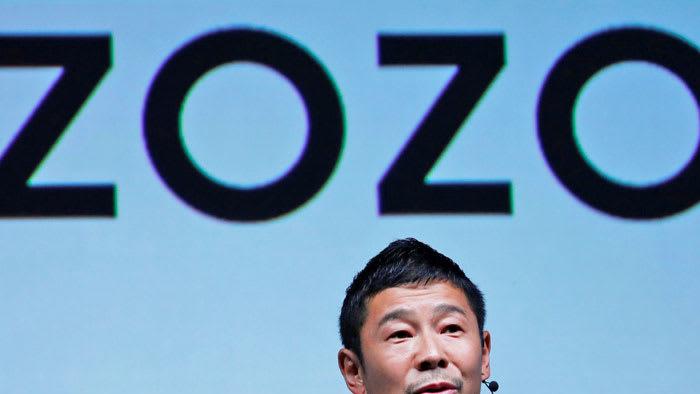
Who is Yusaku Maezawa, SpaceX's first lunar tourist?
Elon Musk shocked the world on Monday when he revealed the identity of SpaceX's first lunar orbit tourist to be Mr. Yusaku Maezawa, a Japanese billionaire who made his fortune in online fashion retail.

SpaceX reveals identity of the world's first lunar space tourist
The last time that humanity set foot on the lunar surface, Richard Nixon was still president and Pink Floyd was still in the midst of recording their seminal album about its dark side. And while SpaceX's tourism plans don't involve actually setting down on our nearest celestial neighbor, the company does hope to put Yusaku Maezawa, the billionaire founder of Japanese fashion retailer, Zozotown, as close to it as any human has been in the past couple of decades.
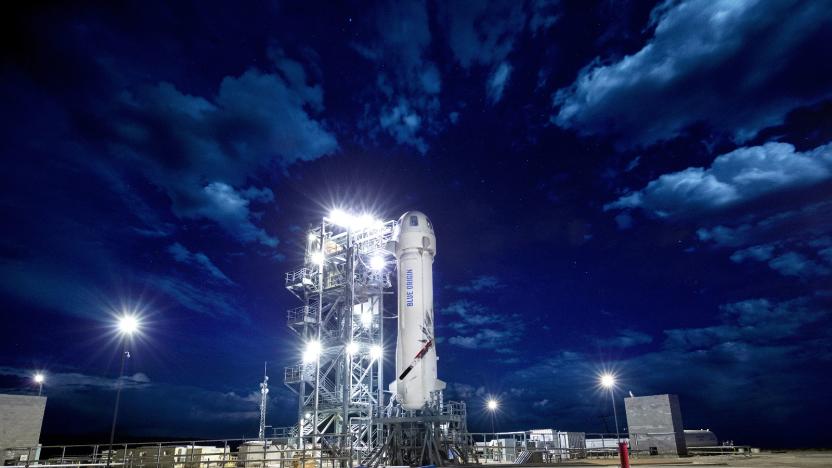
Blue Origin's suborbital flights might cost $200,000 per ticket
Blue Origin still has to launch its first manned flight before it can start taking people to suborbital space. But if you're wondering how much money to save for a trip, the answer could be at least 200 grand. According to Reuters, employees "with first-hand knowledge of the pricing plan" have divulged that a seat on the company's New Shepard system will cost between $200,000 to $300,000. If true, then its pricing will be comparable to Virgin Galactic's, which had already sold trips to suborbital space for $200,000 to $250,000 per person. As for when tickets will become available for purchase, executives revealed at a conference last month that they're planning to sell seats as soon as next year.

A beginner's guide to space tourism
The era of space tourism is nearly upon us with Blue Origin, SpaceX and Virgin Galactic each vying to be the first company to ferry clients on once-in-a-lifetime treks up to the edge of space and back. While SpaceX is the clear frontrunner when it comes to cargo and satellite launches, Blue Origin is leading the pack in terms of putting actual people into actual orbit.
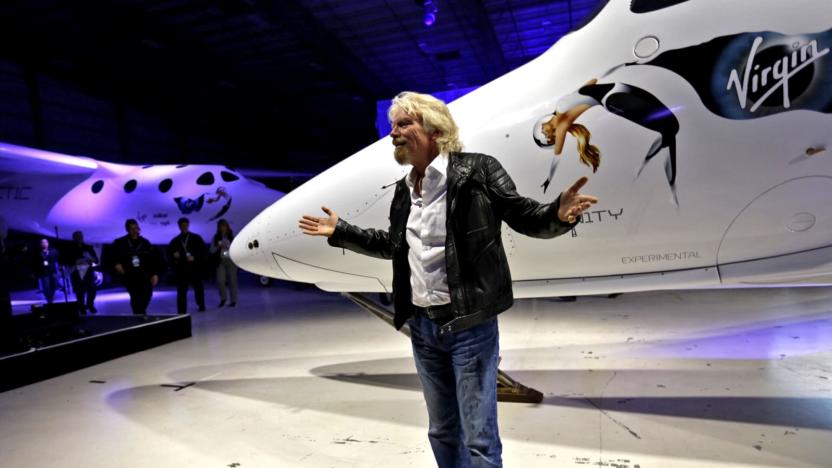
Richard Branson plans to visit space in 'months'
It's no secret that Richard Branson would like to go to space aboard Virgin Galactic's ships. However, it's now clear that he's eager to hasten the process. The tycoon told BBC Radio 4 that he expects his flight to be "months away, not years away," and that he's going through astronaut and fitness training to be sure he's ready. Just when that happens isn't clear (Branson has been optimistic about Virgin's timeline the past), but it's a more realistic claim now that powered VSS Unity tests are underway.
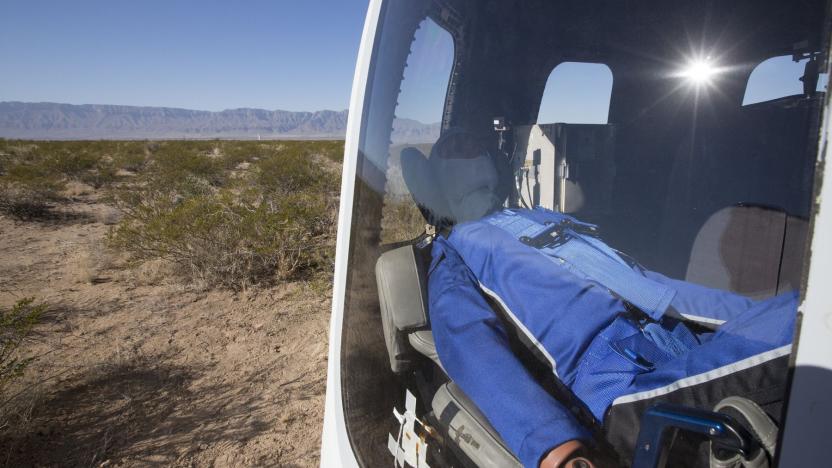
Watch Blue Origin's test dummy experience space tourism
Yesterday we got an exterior view of the first flight for Blue Origin's Crew Capsule 2.0, but now the company is back to show us what it's like from inside. Its plan is to offer "space tourism" trips that take six people at a time beyond the Karman Line to experience weightlessness and views through the capsule's "biggest windows in space." The test capsule isn't looking as polished as the concept images we'd seen before, but this 11-minute video is a pretty good preview of what customers can expect when Blue Origin starts putting real people on top of its New Shepard spacecraft. Plus, according to Jeff Bezos, passengers will be able to get out of their seats to experience zero-g, and on the ground perhaps enjoy the company of this Blue2D2 landing pad robot. Take that, SpaceX drone ship.
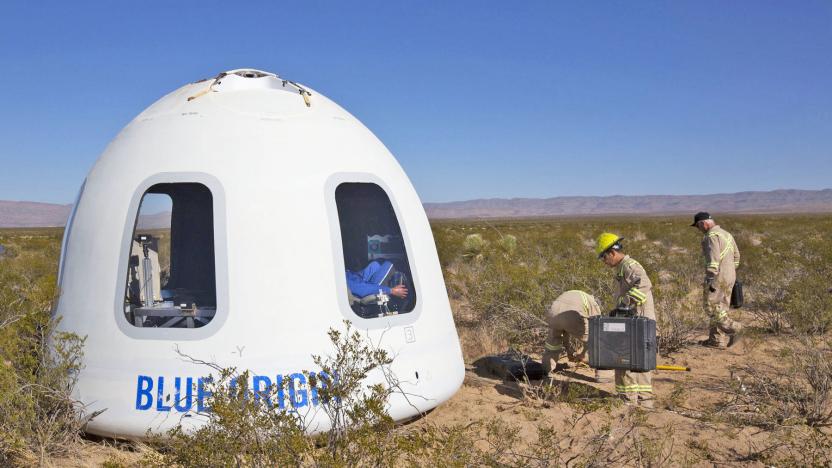
Blue Origin tests Crew Capsule 2.0 with 'biggest windows in space'
Jeff Bezos' rocket company isn't quite ready for space tourism, but today's test flight gets it a bit closer. Bezos tweeted that for the first time, Blue Origin has tested version 2.0 of its Crew Capsule, and while he didn't mention how luxurious the test unit is, it does feature "the largest windows in space." Measuring at 2.4 feet wide and 3.6 feet high, they gave the test dummy a great view from 322,405 feet above ground level.
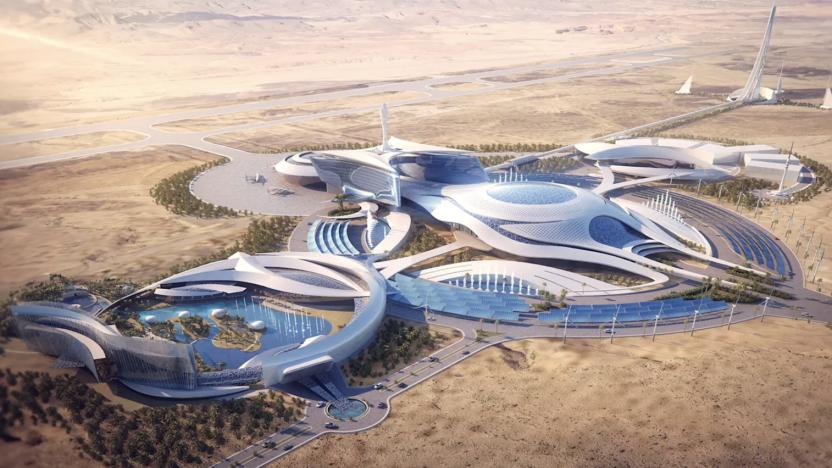
Saudi Arabia plans $1 billion investment in Virgin's space tourism
Richard Branson has gained a powerful and extremely wealthy ally that can make his space tourism dreams a reality: Saudi Arabia. The kingdom will invest $1 billion in the Virgin Group's space companies and might even add $480 million more in the future. This investment will fund three companies within the Virgin Group, starting with Virgin Galactic, which is responsible for developing the VSS Unity (also known as SpaceShipTwo) designed to fly paying tourists to suborbital space. Part of the money will also go to The Spaceship Company and Virgin Orbit. The former manufactures Virgin Galactic's spacecraft, while the latter provides launch services for small satellites.

SpaceX is sending two private citizens around the moon in 2018
It's been a long time since humans orbited the moon -- but Elon Musk's SpaceX is going to try and change that next year. The company just announced that two private citizens approached SpaceX about a trip to the moon for late 2018. The two potential space travelers have already paid a "significant" deposit and SpaceX expects health and fitness tests along with initial training to take place this year. There's no word on how much the travelers will pay, nor who the two individuals are, just yet, but SpaceX also says that other flight teams are interested in similar trips -- if this first voyage works, we could see a whole sequence of trips around the moon in the near future.

Chinese space theme park to send tourists to the stratosphere
Until Virgin Galactic launches, the only way to get to space as a civilian is to pay Russia a cool $20 million. If you're willing to fudge your definition of 'space' however, you may have a much cheaper option in a couple of years: A theme park under development in China is working on a high-altitude 'deep space' balloon tour that will take visitors into the lower stratosphere.

Virgin Galactic poised to start its new spaceship's test flights
Virgin Galactic is ready to put its SpaceShipTwo replacement through a series of test fights, and according to Bloomberg, it will begin sometime in August. The private space corporation launched Virgin Spaceship (VSS) Unity in February to replace SpaceShipTwo, which crashed into the Mojave Desert back in 2014. It was named by Professor Stephen Hawking, shares a similar design with its predecessor and was created take paying customers on a short tour of outer space to the tune of $250,000 per seat.

NASA's space tourism posters will make you want to suit up
NASA's Jet Propulsion Laboratory has a knack for space-themed travel posters. A little over a year ago, its "Exoplanet Travel Bureau" series made its debut with an homage to the iconic WPA prints of the 1930s. This year, the JPL commissioned Seattle-based design firm Invisible Creature to be part of a project/gift for staff. Invisible Creature designed three "travel posters" to be included in the "Visions Of The Future" 2016 calendar. Among the collection are visuals for a multi-planet tour, a stop at Mars and exploring Enceladus, Saturn's icy moon.

Virgin-Tesla takes you to space in Gone Home studio's 'Tacoma'
Fullbright struck a nerve with 2013's Gone Home, its emotionally haunting tale of a 20-something who returns from Europe in 1995 to find her family home deserted. That indie game darling not only became a critical success for the small Portland, Oregon-based studio, but also won a BAFTA in 2014 for best game debut, and two VGX awards -- one for best PC game, the other for best independent game. For Fullbright's follow-up, the near-future, set-in-space sci-fi tale Tacoma, the studio has some undoubtedly high expectations to meet. It's a good thing then that Microsoft, which has partnered with Fullbright to make the game an Xbox One exclusive, is there to lend a deep-pocketed helping hand. Tacoma is very much still in development and won't be out until mid-2016. But that didn't stop Fullbright co-founder Steve Gaynor and level designer Tynan Wales from trotting out a short 30-minute demo that gives a glimpse of the augmented reality and artificial intelligence that pervades Tacoma's world. I recently had a chance to chat with both Gaynor and Wales about avoiding the sophomore slump, their sci-fi inspirations, a possible HoloLens demo, killer AIs and why space could be a very gay place.

Russia will resume space tourism in 2018
Russia's Roscosmos space agency is in a bind. It makes money ferrying American astronauts to the International Space Station, but it's going to have a lot of unclaimed seats once NASA starts using capsules from Boeing and SpaceX. The solution? It's resuming space tourism. When 2018 rolls around, Energiya (the main company handling manned trips) will fill the empty third chairs on Soyuz flights to the ISS with tech moguls and anyone else who has the time and money to enter Earth orbit just for kicks. It's not going to be as glamorous as purpose-built space tourism programs (whenever they're finally ready), but something tells us that Russia won't have a problem finding paying customers. [Image credit: NASA, Flickr]

Felix Baumgartner is the man who fell to Earth and lived to tell the tale
"I would not do it again because there's nothing else to accomplish ... The fact that it worked once, does not mean it will work again." Felix Baumgartner is a rock star. At least, he is to the bright-eyed group of tween boys crowding his Red Bull Stratos exhibit at the Smithsonian, the pieces of which are now set to become part of the museum's permanent collection. Baumgartner could also probably be an action movie star. He's brimming with braggadocio in that way only men who've dared and triumphed over the impossible can be; ruggedly handsome in a way you wouldn't expect from a daredevil. And he's also very stylish. Baumgartner refers to himself as the "fastest man in the sky," and the distinction is well-earned. In October of 2012, the Austrian stepped out from a custom-made space capsule 24 miles high and space dove toward terra firma, breaking the sound barrier along the way. As you might imagine, a free fall from the edge of space is not without significant risks. "I heard a lot of nightmare stories about flat spinning," he told me. "Which, if it happens too fast, you're facing too many RPMs; you cannot stop that spin anymore. And, at a certain point, the blood has only one way to leave your body and that's through ... your eyeballs. That means you're gonna die."

Britain throws another £60 million at the Skylon spaceplane, hopes mid-life crisis is over soon
After a series of successful tests on the Skylon spaceplane's SABRE engine, the UK government has decided to invest another £60 million to continue developing it. The scramjet-based tech could pave the way for cheaper space travel, since it carries little oxygen on board and can maneuver like an airplane before rockets kick it into orbit. Earlier, a key component that chills air from 1,830 to minus 302 degrees Fahrenheit in 1/100th of a second passed its trials with flying colors. That means the project team can move to the next phase: building and ground testing a prototype SABRE engine. Though billions of pounds more would be needed to eventually develop a Skylon vehicle, a European Space Agency spokesman thinks it would be worth it, saying "we have something here that is really unique." Let's hope they can match recent scramjet success stateside and avoid the whole crashing part.








